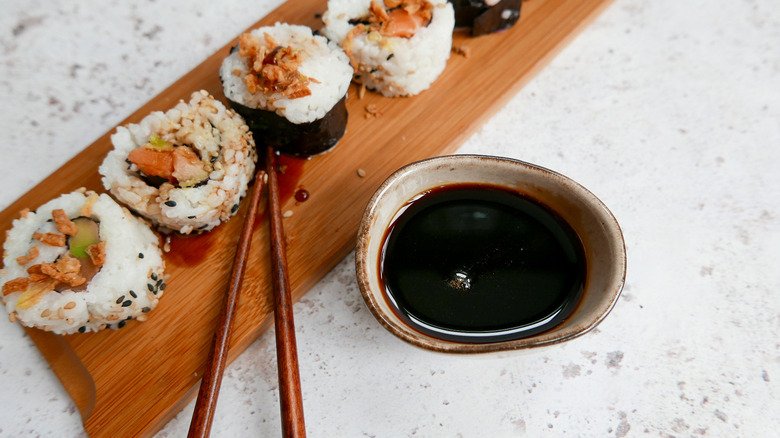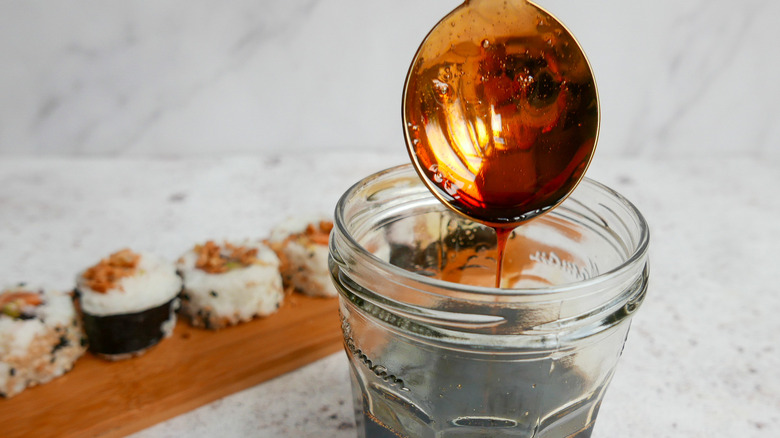Here's What Your Homemade Eel Sauce Should Actually Look Like
We may receive a commission on purchases made from links.
The Japanese condiment known as eel sauce, or unagi no tare if you're traveling in Japan, is the ideal companion to traditional meals like sushi and noodle dishes. You might have dipped your food in some at your favorite Japanese eatery or used a store-bought version at home, like this Nippon Shoken Eel Sauce. In many places, it's known simply as sushi sauce. And as easy as it is to pick up a bottle at the store, homemade eel sauce gives you control over flavor, ingredients, and health factors. However, there are some visual cues you'll need to watch out for to make sure the eel sauce is made properly. And don't worry, you don't need any eels to prepare it.
Out of everything you should know about the umami-rich eel sauce, the appearance of the finished condiment is a signal of success. First, the sauce should be reduced by about half in the pan to achieve its consistency. It will continue to thicken as it cools so it's important to remove it from heat after the ingredients have reduced. The sauce will be ready when it reaches nappe consistency. This simply means that when you coat the back of a spoon and run your finger through the middle, the line in the sauce remains. If that happens, you're doing things correctly and it's ready to serve. The sauce should also appear a rich very dark-brown color when it's done.
How to get good eel sauce consistency — and how to fix it
The first thing to do is follow Tasting Table's homemade eel sauce instructions by recipe developer Ting Dalton. According to Dalton, the sauce should be thick like ketchup with a glossy appearance when it's ready. In order to achieve this, bring mirin, sake, white sugar, and soy sauce to a boil, then reduce to medium heat and simmer for around 20 minutes. The best way to know it's ready, despite when the timer goes off, is to check out for those cues we mentioned earlier.
Reducing sauce to the proper consistency can be tricky, but there are some ways to at least try to fix it if you've taken it too far, or not far enough. Remember to allow the sauce to completely cool so it can thicken, and it should reach the desired consistency. If not, you can try to reduce it further over low heat until it's thicker. Or you can also add a cornstarch slurry (a mix of cornstarch with a little water) to the finished sauce to thicken it further if it's too watery to serve. When it's ready, enjoy your homemade sauce with California rolls or a miso sesame beef noodle bowl.

